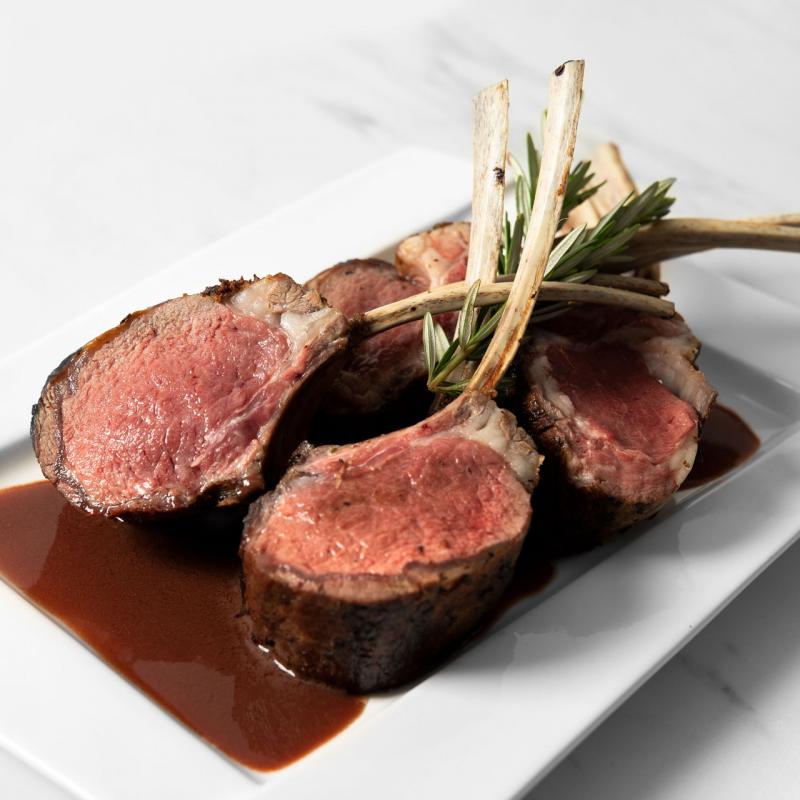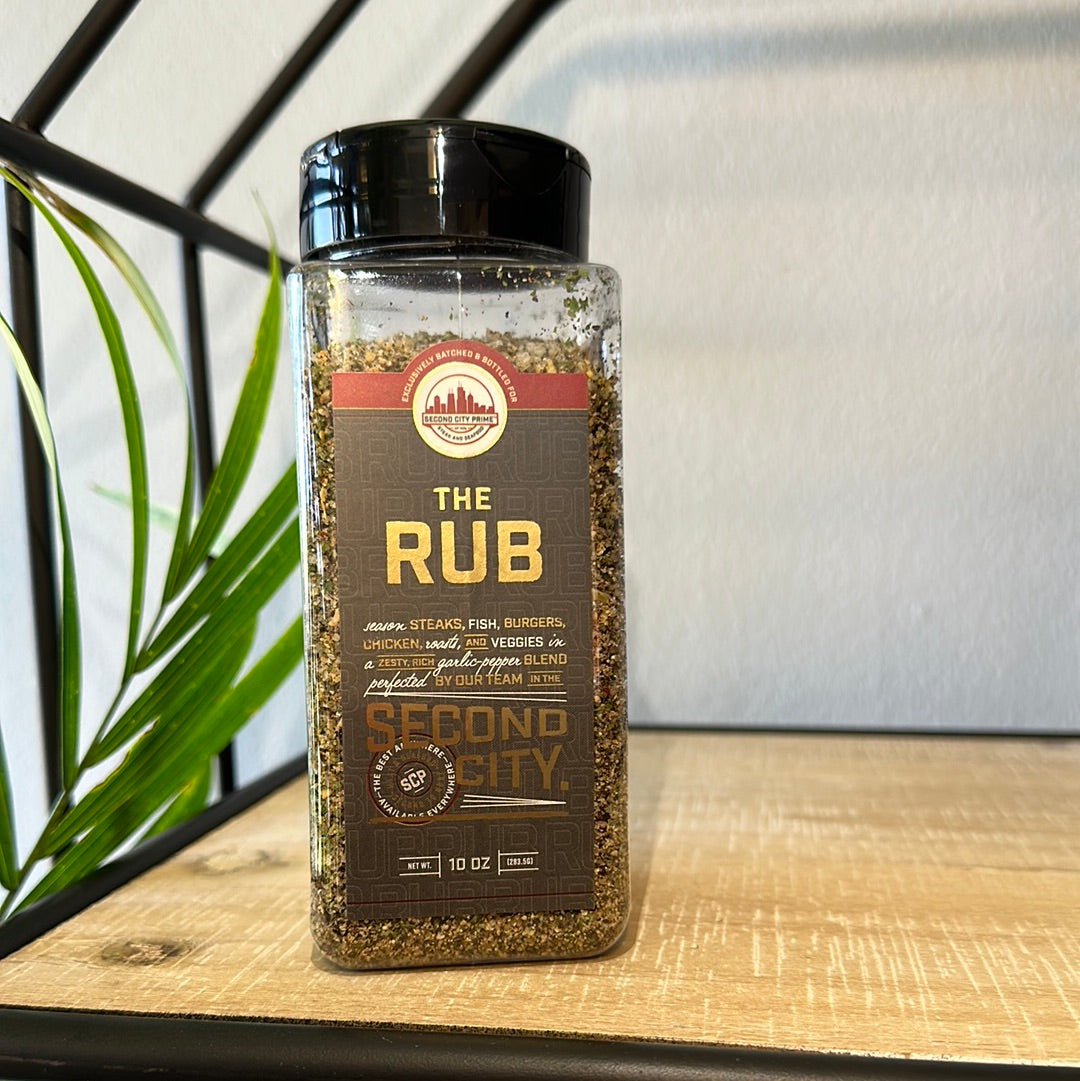Dry-Aging vs. Wet-Aging Prime Steaks: The Complete Comparison Guide
Aging is the critical process that transforms fresh Prime beef into an exceptional culinary experience.
The two primary methods—dry-aging and wet-aging—produce distinctly different results despite serving the same fundamental purpose. This guide explores the essential differences between these techniques and how they enhance USDA Prime beef's natural excellence.
The Aging Fundamentals
Aging improves beef through enzymatic breakdown of muscle fibers and connective tissue, resulting in enhanced tenderness and flavor development. However, dry-aging and wet-aging achieve these results through dramatically different processes:
Dry-Aging: The Traditional Method
Process:
- Beef is hung or placed on racks in controlled environments
- Temperature maintained at 34-38°F (1-3°C)
- Humidity controlled at 80-85%
- Air circulation carefully managed
- Duration typically 21-45+ days
Physical Changes:
- Significant moisture evaporation (15-25% weight loss)
- Development of hardened exterior crust
- Visible darkening of external surface
- Trim loss of 20-35% before cooking
Wet-Aging: The Modern Approach
Process:
- Beef is vacuum-sealed in airtight packaging
- Stored at refrigerated temperatures (34-36°F/1-2°C)
- No airflow or humidity factors
- Protection from external contamination
- Duration typically 7-28 days
Physical Changes:
- Minimal moisture loss (<5%)
- No exterior crust formation
- Maintains original color and appearance
- Little to no trim loss before cooking
Flavor Development Differences
Dry-Aged Flavor Characteristics:
- Intensification: Concentrated beef flavor due to moisture loss
- Complexity: Development of nutty, earthy, and sometimes funky notes
- Descriptors commonly used: Mushroom-like, roasted, buttery, blue cheese notes
- Umami development: Significant enhancement of savory characteristics
- Regional variations: Some dry-aging facilities develop signature flavor profiles
Wet-Aged Flavor Characteristics:
- Freshness: Maintains brighter, cleaner beef flavor
- Subtle enhancement: Mild flavor development without funky notes
- Descriptors commonly used: Juicy, metallic, fresh, blood-like (in early stages)
- Sweetness: Often perceived as slightly sweeter than dry-aged
- Consistency: More uniform flavor development across different facilities
Texture Transformation
Dry-Aging Texture Development:
- Enzymatic action: Natural enzymes break down muscle fibers extensively
- Moisture concentration: Creates unique density and bite resistance
- Fat transformation: External fat develops unique waxy texture
- Cooking response: Faster cooking time with different moisture release pattern
- Mouthfeel: Often described as buttery with concentrated richness
Wet-Aging Texture Development:
- Enzymatic action: Enzymes work in moisture-rich environment
- Fiber breakdown: Primarily tenderizes without changing moisture content
- Consistency: More predictable and uniform tenderization
- Cooking response: Standard cooking times with excellent juice retention
- Mouthfeel: Juicy and tender with familiar beef texture
Cost and Value Considerations
Dry-Aging Economics:
- Weight loss factor: 15-25% moisture loss during aging
- Trim loss impact: 20-35% of external surfaces removed before sale
- Facility requirements: Specialized aging rooms with precise controls
- Space utilization: Requires significant dedicated aging space
- Energy consumption: Higher ongoing operational costs
- Typical premium: 25-50% more expensive than wet-aged equivalent
Wet-Aging Economics:
- Weight retention: Minimal weight loss during aging process
- Trim efficiency: Standard trimming similar to unaged beef
- Facility requirements: Standard refrigeration only
- Space utilization: Compact storage in existing refrigeration
- Energy efficiency: Lower energy footprint
- Market positioning: Industry standard pricing benchmark
Optimal Applications for Each Method
Best Candidates for Dry-Aging:
- Prime ribeye: The classic dry-aging cut with ideal fat structure
- Prime strip loin: Excellent balance of marbling and firm texture
- Prime bone-in cuts: Enhanced flavor development from bone influence
- Larger subprimals: Better economics with larger format aging
- Special occasion steaks: When distinctive flavor is primary priority
Best Candidates for Wet-Aging:
- Prime tenderloin: Preserves delicate flavor while enhancing tenderness
- Prime top sirloin: Improves tenderness without overpowering natural flavor
- Leaner Prime cuts: Better moisture retention in cuts with less marbling
- Individual portion cuts: More practical than dry-aging for smaller pieces
- Value-oriented Prime: Maximum tenderness improvement per dollar
The Optimal Aging Periods
Dry-Aging Timeline Effects:
- 14-21 days: Tenderness improvement with minimal flavor development
- 28-35 days: Balanced enhancement of both tenderness and flavor
- 45-60 days: Significant flavor transformation with pronounced funky notes
- 75+ days: Extreme flavor development for specialized applications
- Sweet spot for most consumers: 28-35 days
Wet-Aging Timeline Effects:
- 7-10 days: Minimal tenderization (standard shipping/handling period)
- 14-21 days: Optimal tenderness development with clean flavor
- 28+ days: Maximum tenderization with potential for sour notes
- Sweet spot for most consumers: 14-21 days
Home Storage Considerations
Dry-Aged Storage Guidelines:
- Shelf life: 3-5 days refrigerated after purchase
- Wrapping: Butcher paper preferred over plastic wrap
- Position: Elevate on rack for air circulation
- Temperature zone: Coldest part of refrigerator
- Quick cooking: Best consumed sooner rather than later
Wet-Aged Storage Guidelines:
- Unopened vacuum packaging: Up to 14 days refrigerated
- After opening: Use within 3-4 days
- Rewrapping: Tightly wrap in plastic if removing from original packaging
- Freezing option: Can be frozen for up to 6 months in original packaging
- Thawing method: Slow thawing in refrigerator for 24-48 hours
Cooking Adaptations for Aged Prime Steaks
Dry-Aged Cooking Considerations:
- Cooking temperature: Often cooks faster due to moisture loss
- Seasoning adjustment: Requires less salt than wet-aged
- Oil application: Benefits from light oil coating before cooking
- Cooking method ideal: Cast iron or high-heat grill for enhanced crust
- Resting period: Slightly shorter rest time (3-5 minutes) often sufficient
Wet-Aged Cooking Considerations:
- Temperature management: Standard cooking times and temperatures
- Moisture handling: May benefit from longer rest to retain juices
- Seasoning level: Standard seasoning approach
- Method versatility: Adapts well to all standard cooking techniques
- Resting period: Standard rest time (5-7 minutes) recommended
Expert Perspectives
"Dry-aging creates a completely different product—not better or worse than wet-aging, but fundamentally transformed. When you dry-age Prime beef, you're creating something with concentrated flavor that's closer to charcuterie than fresh beef." — Pat LaFrieda, Celebrity Butcher
"Wet-aging is often underappreciated because it lacks the marketability of dry-aging, but it delivers exceptional tenderness while maintaining the clean, bright beef flavor that many consumers actually prefer. For Prime beef, it's often my go-to method for cuts like tenderloin." — Meathead Goldwyn, Barbecue Expert
Conclusion: Choosing Between Aging Methods
Neither aging method is inherently superior—each offers distinct advantages for different preferences and applications:
Choose dry-aged Prime when:
- You seek bold, complex flavor development
- The unique dry-aged character is your priority
- You're preparing a special occasion meal
- Budget is secondary to distinctive experience
Choose wet-aged Prime when:
- You prefer clean, traditional beef flavor
- Maximum juiciness is your priority
- Value and yield are important considerations
- You enjoy the bright flavor of well-aged but traditional beef
For many beef enthusiasts, the ideal approach includes both in your repertoire—dry-aged for certain cuts and occasions, wet-aged for others. Understanding the fundamental differences between these methods allows you to select the perfect aging style for your specific preferences and culinary applications.
Ready to experience perfectly aged Prime beef? Browse our selection of dry-aged and wet-aged USDA Prime steaks, hand-selected for exceptional quality and delivered directly to your door.
Tags: dry-aged vs wet-aged beef, Prime steak aging, best aging method for steak, dry-aging process, wet-aging benefits, aged beef comparison, how steak aging works






Leave a comment